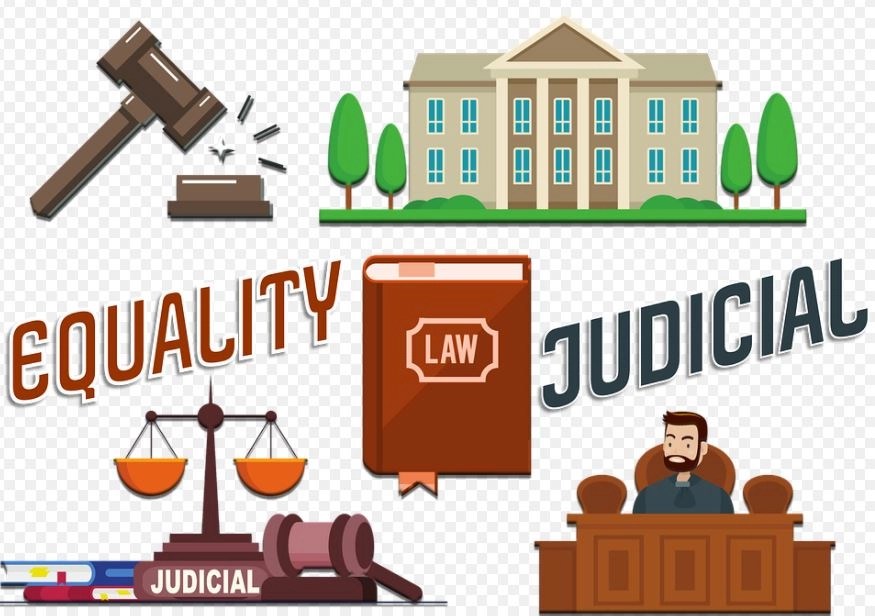
A Constitutional is the supreme law of the land. The Nigerian Constitution is a document that sets out the rules and principles of Nigeria. It was written in 1999 albeit revised in 2007, it is commonly referred to as the 1999 constitution but most recently amended on September 7th, 2010. The document has been called “a brilliant example of participatory democracy with the people” because it was drafted by an elected Constitutional Conference comprising delegates from across the country’s geo-political zones. However, do you know how it came to be? Did you know that there are different types of constitutions? How about the amendment process? Read on to learn more!
What is a Constitution?
The Constitution is a document that outlines how the government of a nation should be run. It establishes rules and regulations for governance, protects citizens’ rights, and limits the government’s power over its people. It defines government structure, including how legislative and executive branches are set up, and lays down just what each branch can do. The Constitution also describes national symbols like the flag, motto, and currency, among other things.
A constitution is a common term for the supreme law of any nation or state. It establishes and describes the organization, powers, functions, and membership of that particular government’s system of authority. The Constitution sets out the fundamental principles by which that nation or state is governed. The Constitution is the highest law of a nation and takes precedence over every other legal system, and it is what makes that nation or states unique.
A Constitution, in the most basic terms, is a collection of governing laws. It defines and limits the powers of government officials so they cannot abuse their authority. It determines the rights of citizens and spells out how to change them. Generally, a constitution is written by its people at their time of independence. A Constitution can be either codified or uncodified:
What is a Codified or Rigid Constitution?
A codified constitution is a set of rules that has been compiled into one document (examples would include the United States Constitution and Australia’s Commonwealth Constitution). It means that everything is written out clearly, so there’s no confusion about where certain powers lie or what role different people have within their government. The latter makes them more challenging to change than non-codified constitutions because they require an extraordinary amount of consensus from all involved parties before any changes can be made to them. A rigid constitution requires special procedures for amending its provisions; this document tends to undergo very little change over time.
What is an Uncodified or Flexible Constitution?
An uncodified constitution is not put together in an official document form. Instead, it’s made up of laws brought about through legal cases over many years, so there is no single overarching document (a common law country such as most English-speaking countries). It lacks a single, comprehensive, and organized document. Instead, the various components are scattered throughout different legal instruments like acts of parliament and court decisions. Since it’s not all contained in one place, this kind of Constitution can be changed more easily because less consensus is required to make amendments to its provisions. The downside here is that things can get messy if there isn’t enough agreement between certain parties on making changes.
Types of Constitution
There are four main types of constitutions: Unitary, Federal, Bicameral, and the Constitutional Republic.
1. Unitary Representation:
This type of government has only one legislative body (unicameral) but several administrative divisions (federal system). Examples include France, Italy, and Japan, which all have a unitary representation with a unicameral legislature. Canada also has this type of Constitution where the central government is responsible for national decisions. In contrast, each province has its provincial governments to deal with local affairs within their respective jurisdictions.
A unitary state is a country where power is concentrated at the center of government. In this system, people within one nation have been unified under a single national identity or allegiance. It implies that citizens can move from a different part of the country without any demands on them changing their loyalties or sense of belongingness. These nations don’t give much autonomy to the regions that make up their territory because they feel regional differences could lead to fragmentation along lines that threaten national unity. They also tend not to allow autonomous territories in terms of self-governance.
Unitary states are governed by a constitution that lays down the structure of government and grants certain powers to that government. The main advantage is that it’s easy for citizens to know their rights and responsibilities as members of society because they’ve been established in one document: the Constitution. It also makes governing much easier since there is only one authority with very clearly defined limits on its power.
However, this system can lead to an authoritarian form of rule. In this rule, those at the top have almost unlimited control over the followers. This type of system has often been criticized as being unresponsive to public opinion. Those who govern don’t need to listen to people so long as they support their supporters.
2. Federal Representation:
In a federal country/state, power is divided between a central or national authority and several regional units. The division can be done along territorial lines (national weight for each province) or by functional purpose (each province has its administrative division). Federal states are autonomous territories (examples include Australia, Mexico, the USA, and Brazil). They have federated constitutions where sovereignty lies with the people residing in that territory while their respective governments administer local affairs.
Power is constitutionally divided between the national or federal level and regional or state/provincial levels of government. Citizens within each territory enjoy self-governance, but there is also an overarching system with authority over all regions (like in unitary systems). There’s usually one Constitution covering everyone living in that country, while some may have separate constitutions covering only part of it.
This type of Constitution tends to work best when you’ve got large geographical areas containing diverse groups who would disagree on how to govern themselves if they were left to do so individually. It gives them more freedom than they would otherwise get because they’re still part of a larger nation, but it also means that there’s less risk of them splitting away from each other. As long as they are represented in central government, citizens can say how the country is run through elected representatives who make up the national parliament. However, this system makes it harder to create political unity since authority isn’t concentrated at one level and within different states/provinces.
3. Bicameral Representation:
A bicameral country/state operates through two separate assemblies or chambers. These assemblies include a lower house and an upper house. The United States, the United Kingdom, and India are all examples of this type of government.
4. Constitutional Republic:
As implied by its name, this type of Constitution features a republic form of government which means it’s ruled by elected representatives from different constituencies rather than hereditary monarchs like in a monarchy system. A constitutional republic is usually headed by three branches: Executive, Legislative, and Judiciary.
Nigeria has a constitutional republic system of government where power lies in three equal branches: Executive, Legislative and Judicial branches. The Nigerian President serves as head of state (head of the executive). Meanwhile, The House of Assembly represents the nation’s legislature, which has the power to make laws and change or amend any part of Nigeria’s constitution. Lastly, The Supreme Court represents the judiciary that interprets the constitution.
The Nigerian Presidency is a very significant political office. It’s because they possess powers such as:
- Commander in Chief of the Armed Forces;
- Appointment Powers: They appoint all top public officials like Ministers, Ambassadors, etc.; and
- Additionally appoints Justices members of State Constitutional Offices.
Meanwhile, Governors serve as heads for each state with their executive branch.
Amendment Process of The Constitution
Amendment Process: How does one change/amend a Constitution? There are several ways to make changes to a constitution. First, the amendment process can be initiated by either of these two methods:
a) National or Federal Level:
The proposed change must first pass through both houses for it to become law. After that, it’s up to the people themselves whether they accept this new form of government via referendum/plebiscite. If at least half of eligible voters participate, then if the majority votes yes, the change becomes effective; otherwise, no action will occur.
b) State or Provincial Level:
Amendments are usually made when there is an urgent need for reform and politicians fail to address them through Congress. Hence, citizens must initiate amendments directly, which requires support from three-fourths (75%) of state legislatures.
Proposed amendments must pass through these three stages: First, it is given by a majority vote in both houses of Congress or provincial legislatures. Second, the proposed amendment should be ratified by at least half (50%) state/provincial legislators. Lastly, this change will only become effective after ratification from three-fourths (75%) of all states.
A formal proposal to amend the Constitution can come from Congress itself, which requires support from two-thirds (66%) votes or directly initiated by citizens who need approval first via referendum before being submitted for voting. The latter is followed by passing into law once supported with majority votes during election time, where eligible voters are given the right to choose their respective future leaders and government officials and approve any changes made to the Constitution.
The proposed change must first pass through both houses for it to become law. After that, it’s up to the people themselves whether they accept this new form of government via referendum/plebiscite. If at least half of eligible voters participate, then if the majority votes yes, the change becomes effective; otherwise, no action will occur.
The Nigerian constitution consists of three chapters and 19 sections, along with six schedules for a total document length of 67 articles. This constitution was drawn up in 1999 and popularly referred to as the 1999 constitution, when Nigeria returned to democratic rule, and the most recent amendment is the 2014 constitutional review act which took effect on October 14th, 2016. While this document has been amended several times since its creation, it remains unchanged, with only minor amendments made over time.



